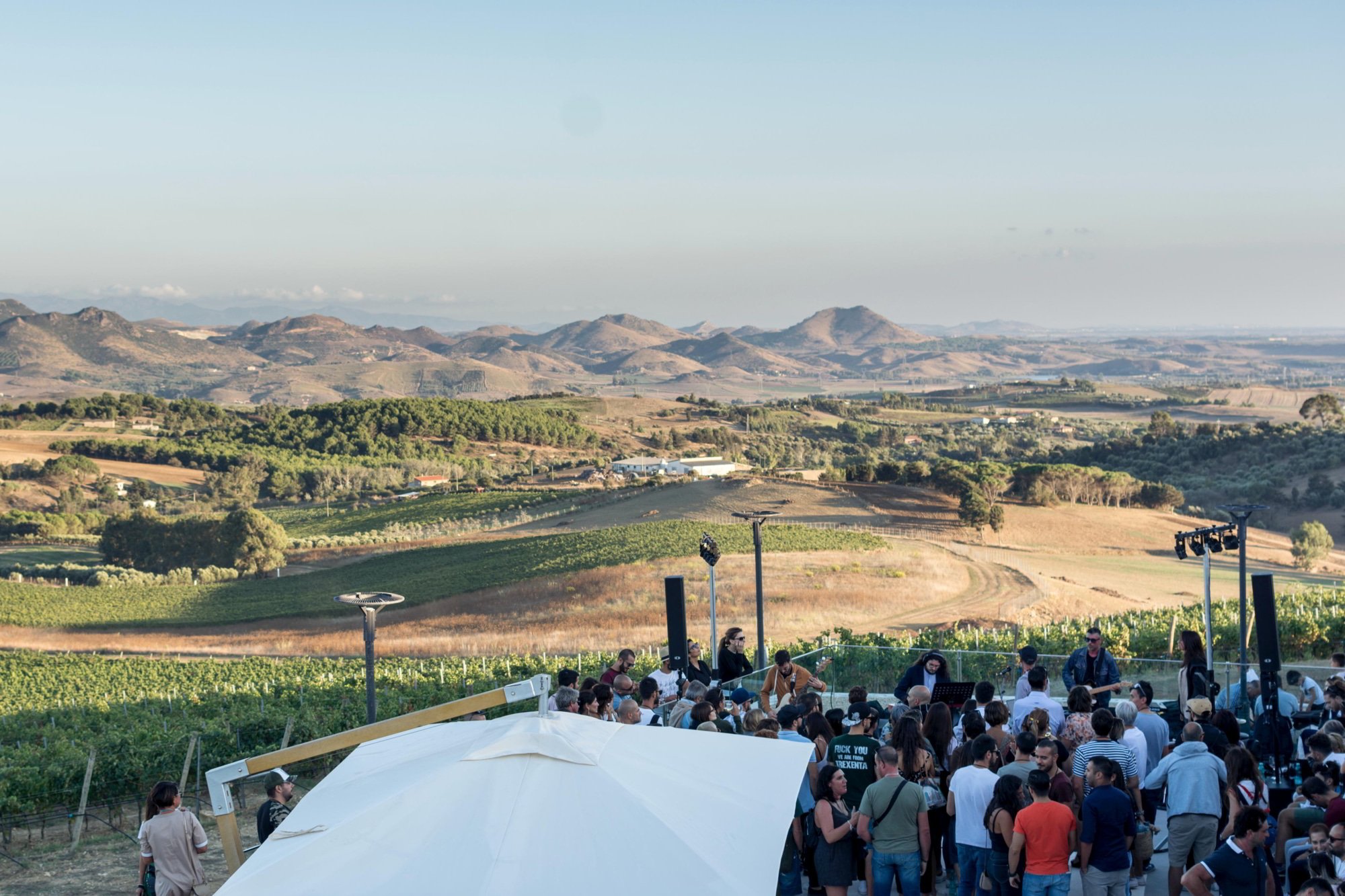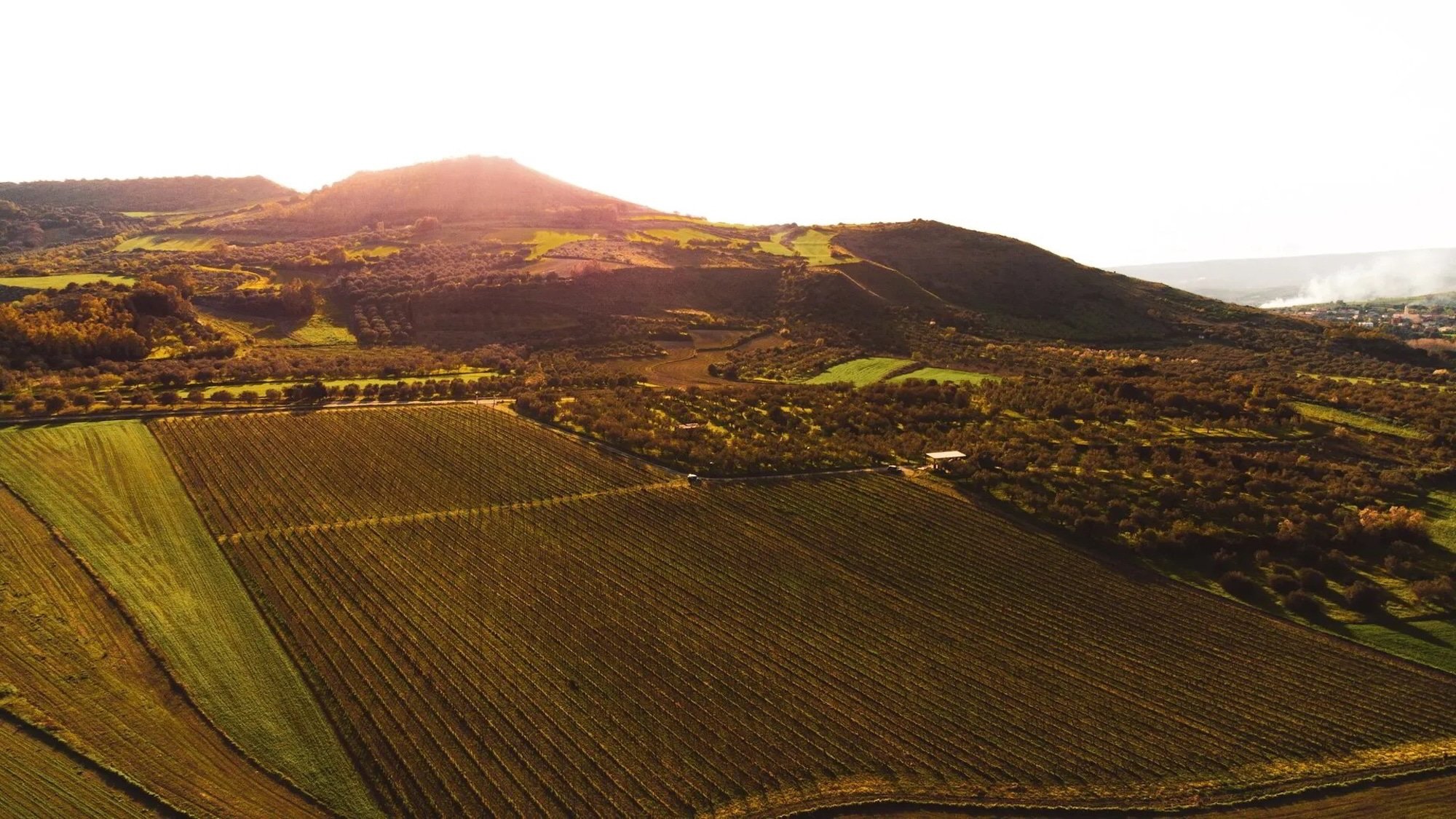Get to Know the Wines of Sardinia
Li Piscini beach, Sardinia, Italy
When it comes to thinking about Sardinia, the second biggest Italian island set in the western Mediterranean Sea, most people imagine white sandy beaches, turquoise waters, and spectacular rocks hanging over the sea. Those who have an interest in archeology and historical mysteries would probably also know it for its incredible archeological heritage made of prehistoric, enigmatic buildings and sites made of stones or carved in the rocks, such as the beguiling nuraghi or domus de janas. Yet, Sardinia also deserves to be known – and visited – for the genuine warmth of its people, which only need a few appropriate words or a glass of wine to scratch the reserved, and sometimes apparently grouchy, surface.
Hosting one of the five world’s “Blue Zones” – regions where people are claimed to have longer and happiest lives due to a lifestyle combining physical activity, low stress, rich social interactions, and a local whole-foods diet – in the Ogliastra area, a significant part of Sardinian charm also resides in its remarkable and still underrated food and wine heritage. The repertoire includes excellent products – starting with intense sheep cheeses, tasty cured meats, and the precious bottarga: salted and dried salted mullet roe – and earthy recipes rooted in the island's rural tradition.
Background
Bovale grapes photo credit Bentu Luna
Many archeological findings, dating back as far as the 15th century B.C., indicate that Sardinia is one of the oldest wine-making regions in the western Mediterranean. The island produces almost equally white and red grapes. The sapid and fruity Vermentino, with its distinct mineral profile when grown on the granite soils of Gallura, and the aromatic Cannonau, especially the rich and full-bodied ones made in the central area of Barbagia, are just a few examples of the island's notable wine heritage.
The actual list is much richer, though. Also boasting 17 DOCs and 15 IGTs (some of which, to be honest, are not very much represented by the actual production), the island has many other interesting wines to offer: from the elegant and complex Carignano, from the red grapes, mainly growing on the sandy soils in the southern Sulcis area, to the charming Vernaccia di Oristano, both the name of the white grape and of the dry fortified wine which is a staple of the local aperitivo with matured cheeses or bottarga and perfectly matches the traditional pastries and biscuits. Long neglected, wine tourism in Sardinia is now a thing, and visiting a few regional wineries offers a different – and exciting – point of view.
Gallura, the land of Vermentino
Jankara wines
Facing the Mediterranean in the region's northeast area and hosting the most known luxury resorts and villages of the mundane Costa Smeralda, such as Porto Cervo and Porto Rotondo, as already mentioned, Gallura is the land of Vermentino. A refreshing and cheerful white to drink on the beach in its basic versions, it can also be a charming and multifaceted wine in its “upper” releases: if you are looking for something similar, try the outstanding Vermentino di Gallura Superiore DOCG Jankara, made from grapes cultivated at about 300 meters above sea level: Mediterranean wild herbs, flint stone and iodine scents accompany a fresh, savory and vibrant sip. With a reservation, it is possible to visit the winery in Sant’Antonio di Gallura, in the inner area of Gallura, to taste all the Jankara wines (also including two versions of Cannonau and Lu Nieddu Colli Del Limbara IGT, an interesting blend of 6 different grapes including the rare indigenous ones Caricaggiola and Pascale).
Surrau® winery
Not too far from Jankara and close to the evocative hamlet of San Pantaleo – bustling with visitors and bars in summer and quiet and charming out of season – Surrau is the welcoming winery built by the Demuro family near Arzachena: the modern building mostly made of wood and glass, designed by architect Cecilia Olivieri, that harmonically blends with the surrounding vineyards and also serves as a contemporary art gallery, hosting and selling the works by local artists selected by Olivieri. All year long, the winery welcomes visitors for guided tours, aperitifs, dinners (on Thursdays), and tastings that focus on single grapes, selections, or the historical vintages of Sciala, their excellent Vermentino di Gallura DOCG Superiore.
Miradas Murales
Moving towards Olbia, the main town in Gallura, Murales is a family-run winery that, since 2010, has bet on wine tourism: besides producing a number of interesting wines, including the Miradas Vermentino di Gallura DOGC (the result of soft pressing and long fermentation, to enhance the fruit) and the Velo de Flor, a sweet white wine from overripe Vermentino grapes, Murales also offers guided tours, cozy accommodations in rooms or small apartments, and wine therapy with treatments including exfoliation with dried grape marc and Cannonau bath to take advantage of its antioxidant, antiviral effects. They also created their own cosmetic line.
Mandrolisai, the ancient heart of Sardinia
In the exact center of the island lies Mandrolisai, a small territory where nature takes on softer tones compared to the surrounding areas. It surprises visitors with stories and places where archaeology, art, and wine intertwine in unexpected ways. In the most authentic and primordial heart of the island, ancient vineyards of indigenous varieties such as Bovale (locally known as Muristeddu), Monica, and Cannonau thrive.
Cantina del Mandrolisai wines
In the small village of Sorgono – not far from the archeological site of Biru ‘e Concas, with its mysterious anthropomorphic standing stones – the Cantina del Mandrolisai is a cooperative of vine growers funded in 1950, today also including members from the other villages of the area such as Atzara, Meana Sardo, Ortueri and Samugheo. From the indigenous red grape varieties Bovale Sardo (here also called Muristeddu,) Cannonau and Monica, they produce full-bodied, intense red wines, such as the Mandrolisai DOC Rosso Superiore – Gold: part of the Kent’Annos line (meaning “100 years” and dedicated to the notable number of centenarian in the island,) this is a rich, complex and spiced wine, ideal for matching robust flavors such as roasted wild boar or matured cheeses.
Centenarian vineyard photo credit Bentu Luna
In the countryside near Neoneli, a village just outside the proper Mandrolisai region, Bentu Luna has a completely different story: built with natural materials and local craftsmanship, the winery was created in 2019 by entrepreneur Gabriele Moratti, also owning Castello di Cigognola winery in Lombardy. Aiming to create connections between people, the land, and wine, this is a sort of “collective project” also involving the brilliant Sardinian winemaker Emanuela Fiore and a number of local growers who were thus incentivized to keep taking care of the old local vines – on average over 40 years old, up to 100 and more – of the Mandrolisai Doc area. From a vineyard planted in 1905 in the countryside of Atzara, Be Luna is a red wine composed of Bovale Sardo, Cannonau, and Monica grapes. Produced in just around 1,200 bottles, it captivates with a complex bouquet featuring notes of cherry, tobacco, Mediterranean scrub (myrtle, mastic), and a touch of balsamic elegance.
Marmilla: grain, olives, and wine
Giara di Gesturi photo credit Jurgen Scheeff
Just north of Cagliari, the regional capital, Marmilla is a lesser-known yet fascinating area where significant archaeological sites – such as the spectacular Nuraghe Barumini – and natural wonders – like the Giara di Gesturi National Park – coexist alongside an ancient agricultural tradition. In the peculiar hilly landscape, named for the rounded, breast-like shapes of its hills (hence the name of the area from the Italian word mammelle,) cereals, olive trees, and numerous native grape varieties – starting with Bovale – thrive.
Su Entu winery
At the top of a hill constantly caressed by the wind near the village of Sanluri with its beautiful castle (well worth a visit), Su’Entu is a modern winery whose name in the local language means "the wind." Reviving a family tradition, since 2009, the Pilloni family has planted numerous hectares of vineyards in the limestone-clay soils. They have brought renewed attention to the lesser-known Marmilla IGT and the Cannonau di Sardegna and Vermentino di Sardegna DOCs. The Pillonis place great belief in Bovale, an indigenous grape variety with remarkable potential. A prime example of their efforts is Su’ Nico, a pure Bovale made from grapes grown in the limestone-clay vineyards surrounding the winery. This is a "substantial" red wine with intense aromas of red fruits and spices that beautifully showcase the potential of this variety. When visiting Sardinia, the advice is to taste it on the spot, both with a guided tour of the winery or along the excellent meal ad Arieddas, the informal restaurant within the property.
Lilliu vineyards
Not too far, in Ussaramanna, a village located in the valley between the ancient plateaus forming the “great” and “small” Giara, Cantina Lilliu is managed by Pietro Lilliu and his wife, Roberta Porceddu. They are firm advocates of environmentally respectful, 100% chemical-free viticulture and base their vineyard work on the plants' natural ability to support each other. Using ancient dry farming techniques, they allow the grapes to mature slowly on the vines, promoting a balanced and natural ripening process. Thus, their wines are ancient and modern at the same time, and sometimes surprising, too: just like the fresh and lasting Pantumas, a rosé Cannonau di Sardegna Doc from Cannonau grapes fermented off-skin. An original way to discover the winery and its production? Opt for a tour aboard the historic Fiat Campagnola 1982 that takes you through the village and countryside of Ussaramanna, culminating in a final tasting in the vineyard under the pergola, or for a cooking class to prepare a typical farmer’s lunch to be paired with local wines.
Where to Shop for Sardinian Wines
Many of the wines mentioned, along with a wide range of other Sardinian specialties, are exported internationally by Siendas, a company that was created to promote and spread Sardinia's food and wine culture abroad, focusing on the Horeca channel.










